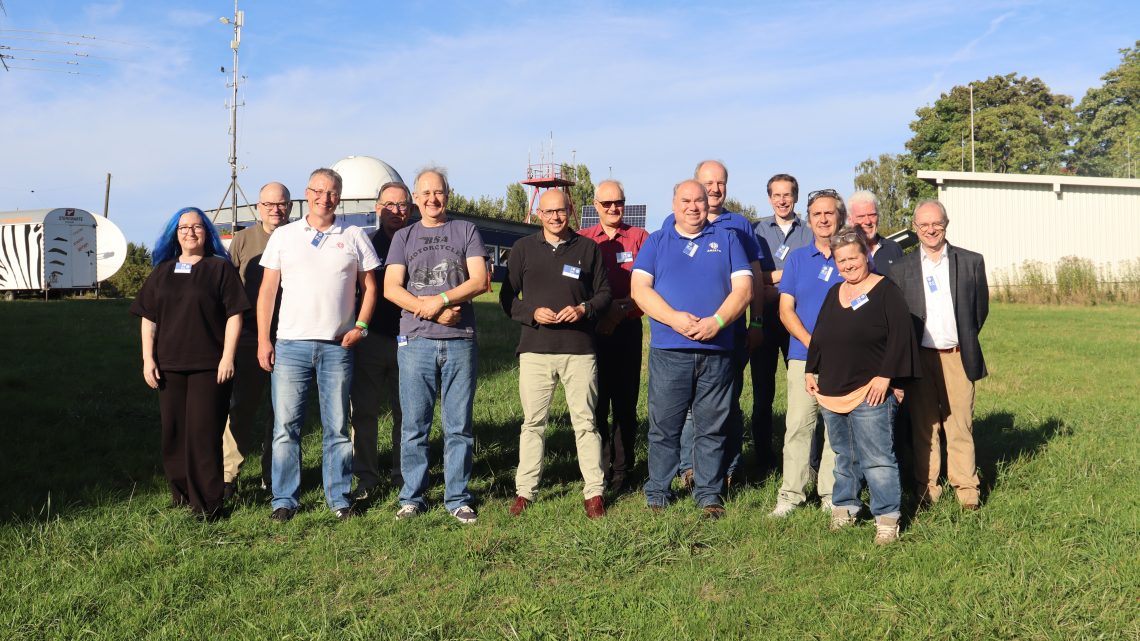
Review: futureGEO Workshop 2025 in Bochum
October 2, 2025Setting the course for the next geostationary amateur radio satellite
On September 19, 2025, the futureGEO workshop took place under the radome of the Bochum Observatory. Organized by AMSAT-DL with the support of ESA, the event brought together international experts, representatives of amateur radio organizations and dedicated radio amateurs who had previously declared their active participation in an appeal and submitted corresponding proposals. In the spring of 2025, AMSAT-DL invited potential interested parties as part of an
From QO-100 to futureGEO
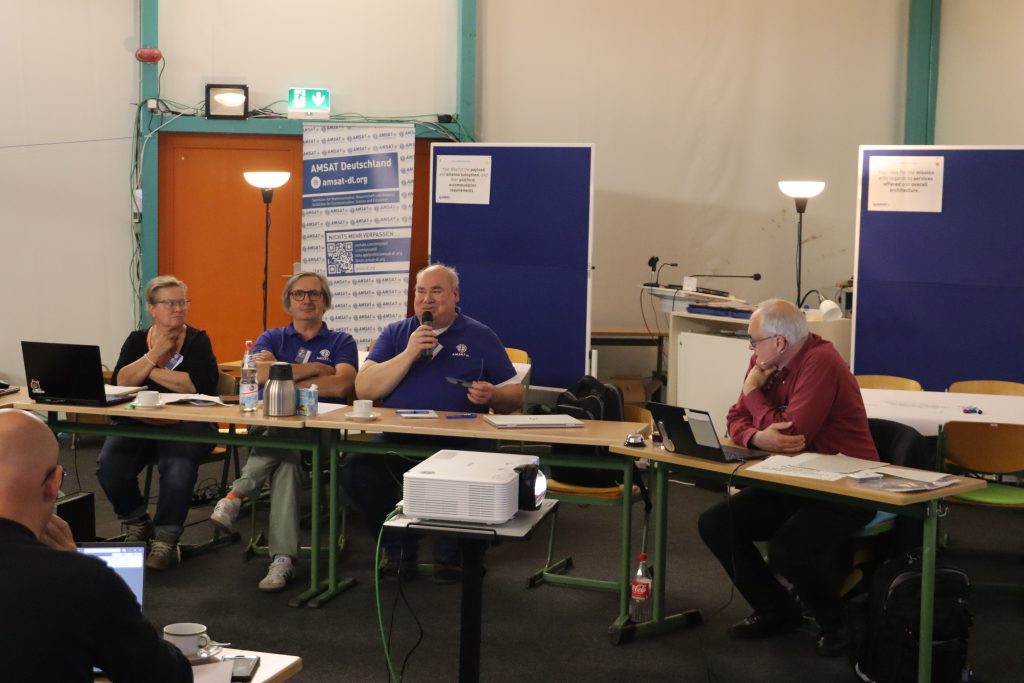
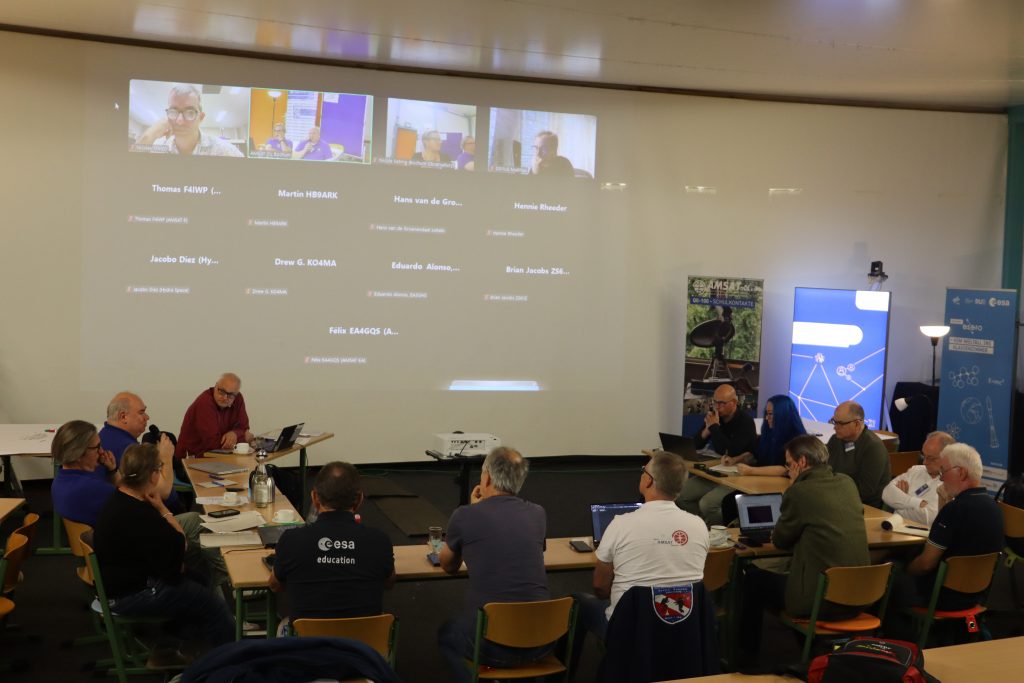
At the opening, Peter Gülzow recalled the history of QO-100’s development: the satellite was not simply a “re-tuned” commercial transponder, but largely customized technology. This experience – and also the limits of construction and operation – are now shaping the plans for a possible successor. ESA representative Frank Zeppenfeldt confirmed that there is great interest on the European side in a new GEO amateur project. Funds for further studies and prototypes could be made available in the next project phase. There is no GEO slot yet and hosting opportunities are hard to come by, but one or more ready-made concepts could significantly increase the chances of a flight in the future as soon as an opportunity arises.
Participants
The workshop was held as a hybrid event. The group was made up of one half who were present on site and the other half who took part online via ZOOM.
- Thomas Telkamp PA8Z Amateur Operator
- Danny Orban ON4AOD Amateur Operator
- Bill Slade (with Danny) Amateur Operator
- Nicole Sehrig Bochum Observatory
- Frank Zeppenfeldt PD0AP ESA
- Ken Easton Open Research Institute
- Michelle Thompson W5NYV Open Research Institute
- Schyler Alder N0GIS ARDC
- Brian Jacobs ZS6YZ South African Radio League
- Hans van de Groenendaal ZS6AKV South African Radio League
- Hennie Rheeder ZS6ALN South African Radio League
- Peter Gülzow DB2OS AMSAT-DL
- Thilo Elsner DJ5YM AMSAT-DL
- Matthias Bopp DD1US AMSAT-DL
- Félix Páez EA4GQS AMSAT-EA
- Eduardo Alonso EA3GHS AMSAT-EA
- Jacobo Diez AMSAT-EA
- Christophe Mercier F1DTM, AMSAT-F
- Nicolas Nolhier F5MDY AMSAT-F
- Thomas Boutéraon F4IWP AMSAT-F
- Michael Lipp HB9WDF AMSAT-HB
- Martin Klaper HB9ARK AMSAT-HB
- Graham Shirville G3VZV AMSAT-UK
- David Bowman G0MRF AMSAT-UK
- Andrew Glasbrenner KO4MA AMSAT-NA
Workshop structure: Collect, cluster and prioritize ideas
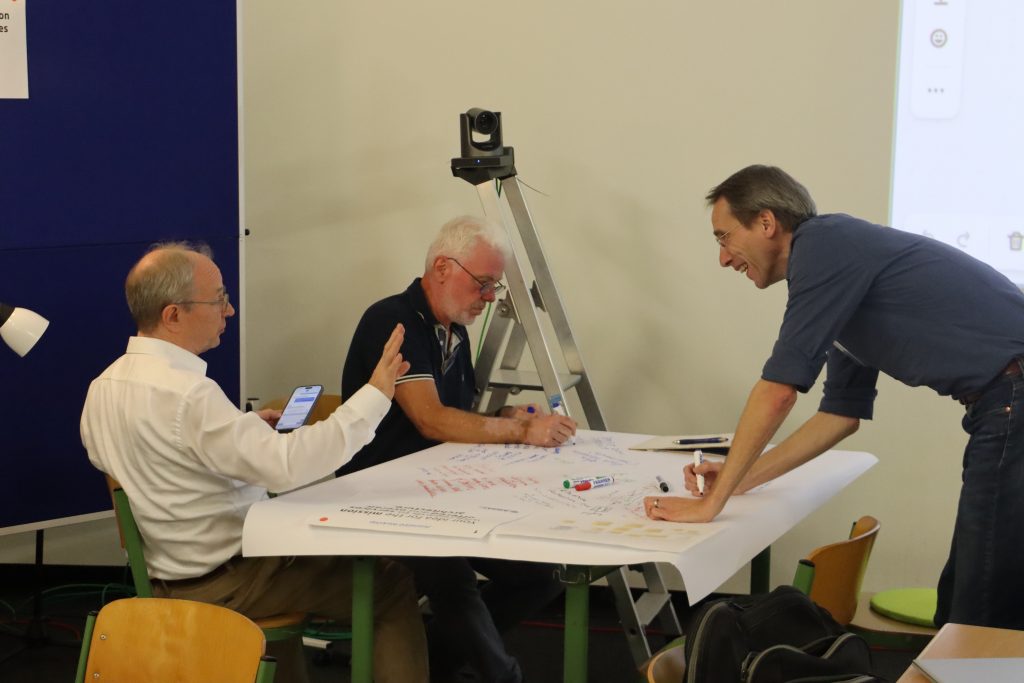
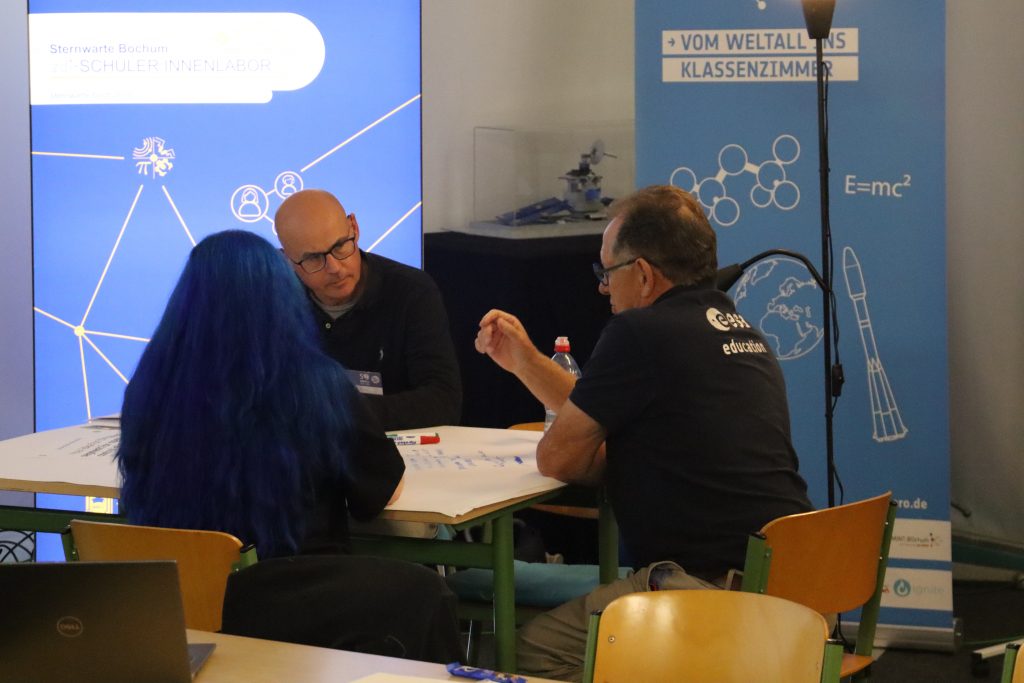
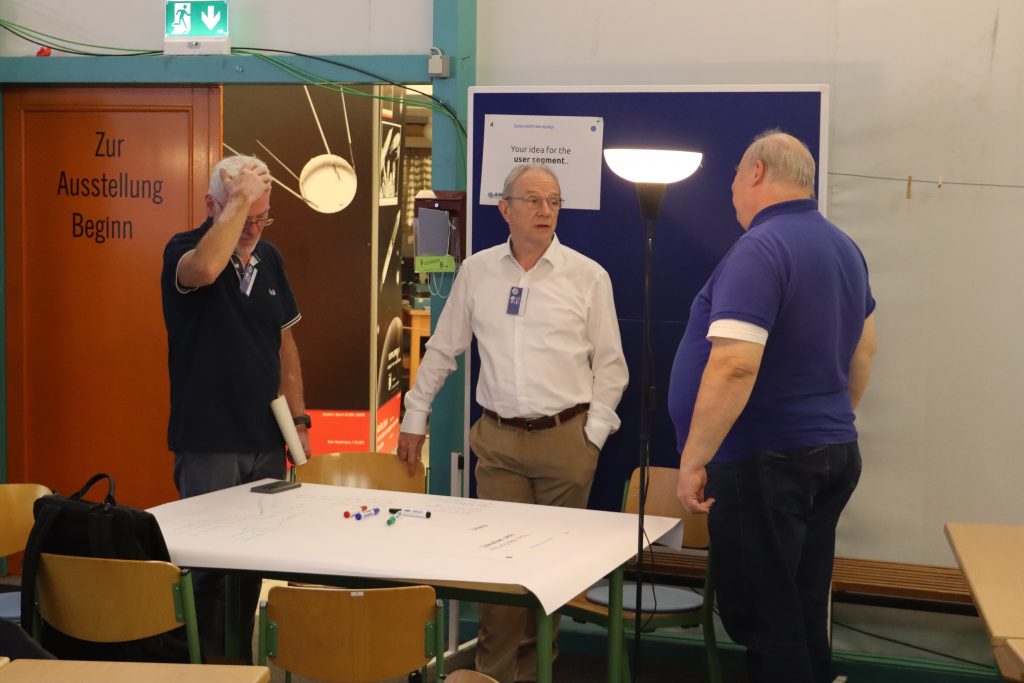
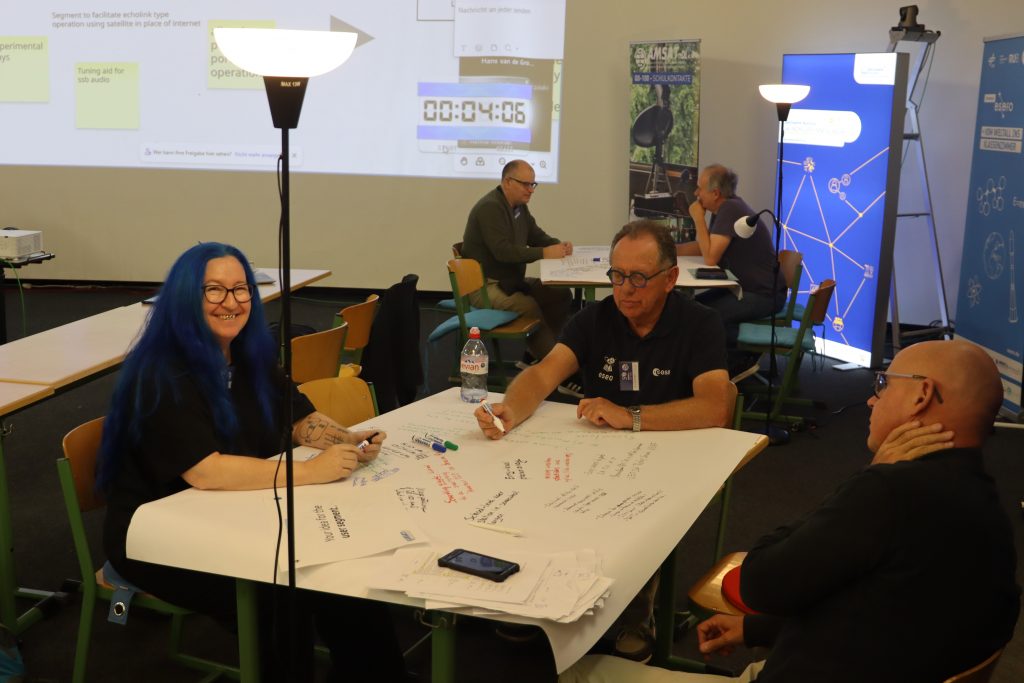
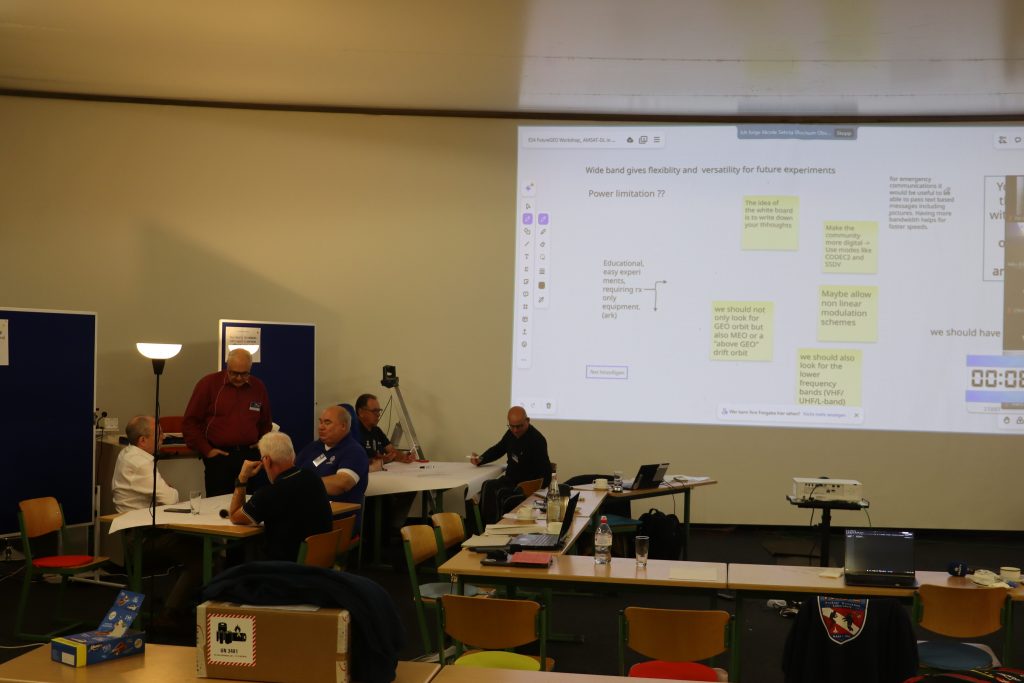
Moderated by Joachim Hecker, an experienced science journalist and engineer, the participants worked in a “World Café” format: four topics were discussed in rotating small groups:
Mission & Services – Which communication services and experiments should a new GEO payload enable?
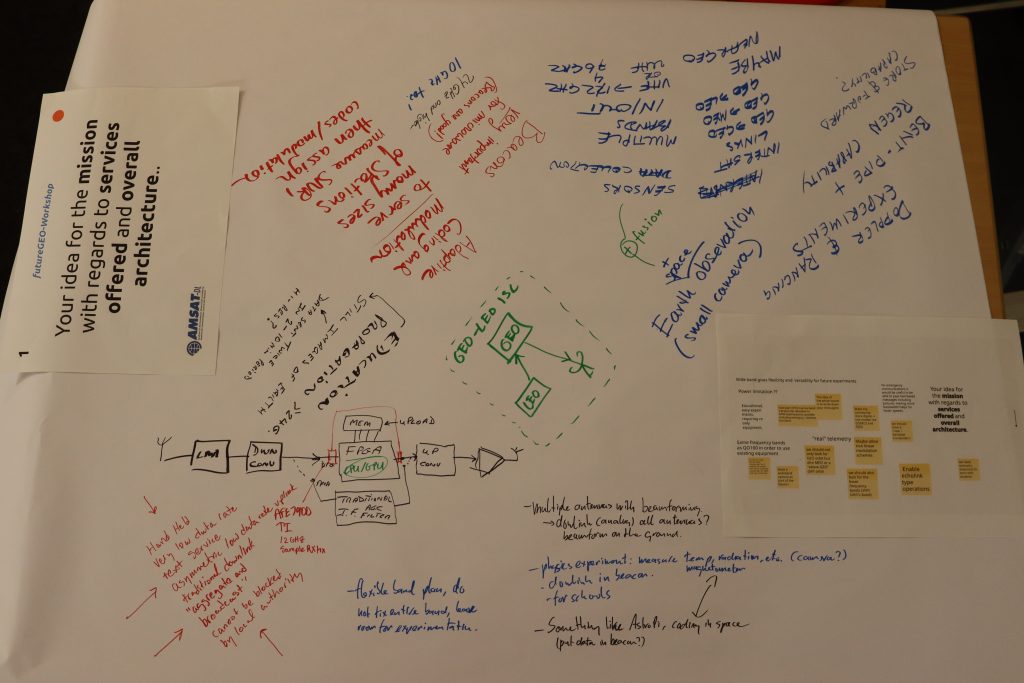
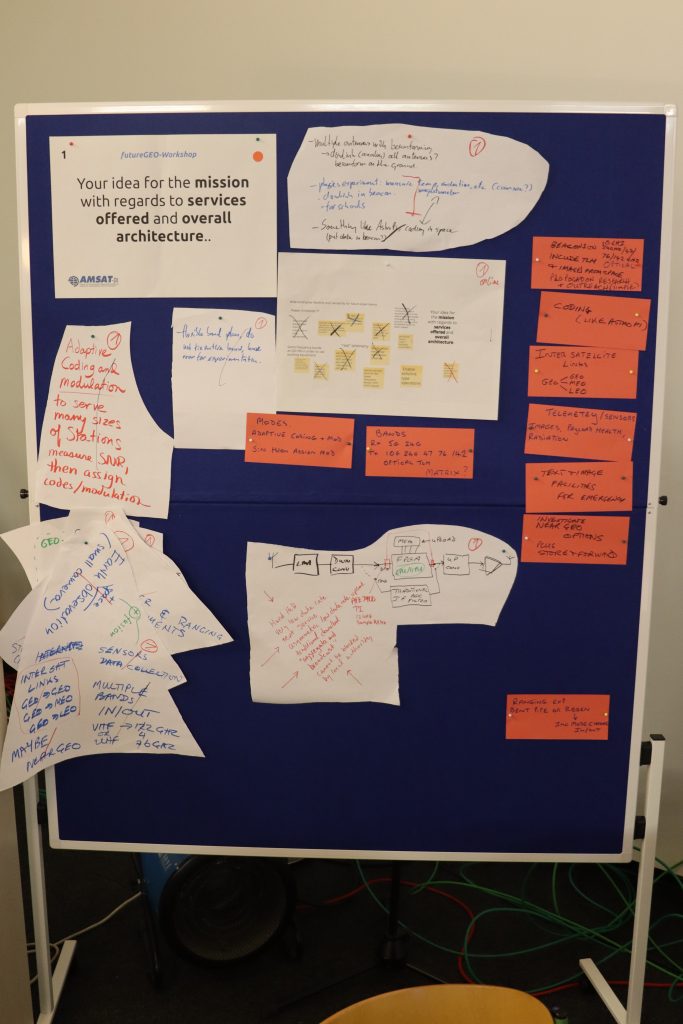
- Classic linear transponder (bent pipe) and/or regenerative options
- Beacons in higher GHz bands as references and for educational purposes
- Ideas such as store-and-forward, Doppler experiments or inter-satellite links
Payload & antennas – What technical solutions are conceivable?
- Phased arrays, controllable radiation lobes
- Multiband uplinks (2.4 GHz, 5 GHz, 24 GHz) with 10 GHz downlink
- Cameras for earth and space photography as an educational contribution
- Sensors for radiation, magnetic fields and space weather
Ground station & operation – How can control and operation be organized?
- Differences between hosted payload and own satellite
- Redundant control stations, stable reference clocks (GPSDO)
- Open telemetry for the community, authenticated commands for security
- Integration of web SDRs and community experiments
User segment – Who should have access and how?
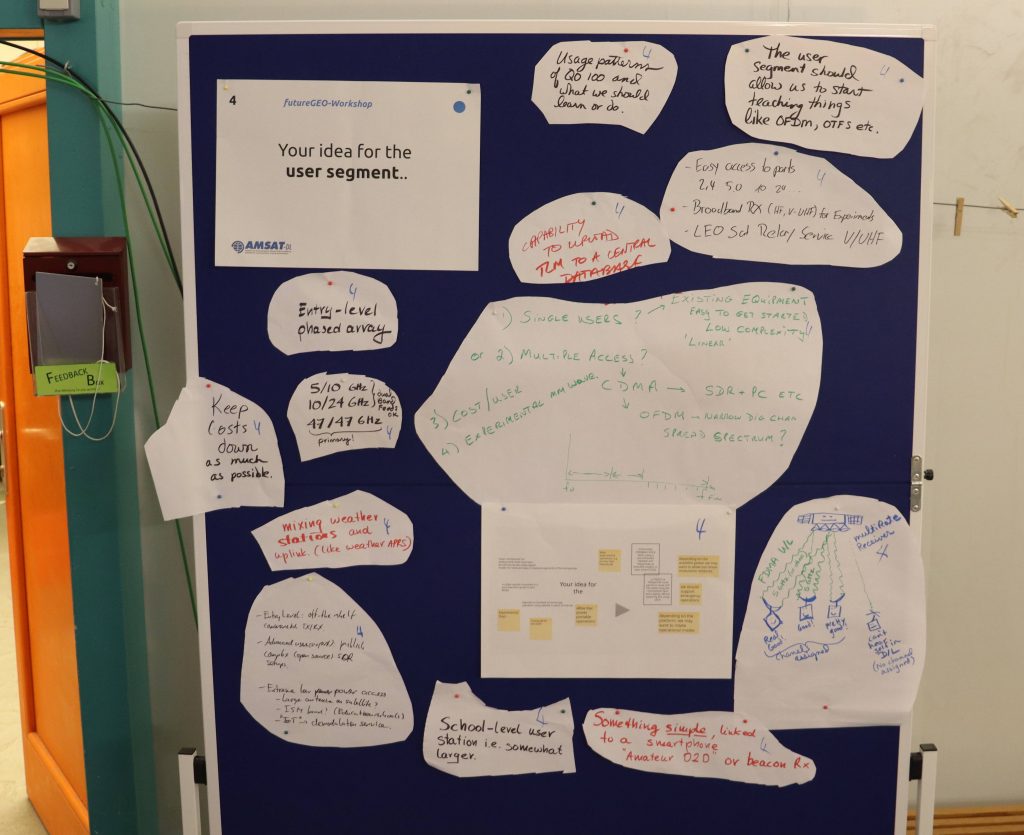
- Simple entry-level stations with cost-effective hardware (2.4 /10 GHz)
- School and educational stations with easy-to-use sets
- High-end experiments in the millimeter wave range (24-122 GHz)
- Support for analog and digital operating modes, including IoT-type services
The results were then collected, clustered thematically and prioritized.
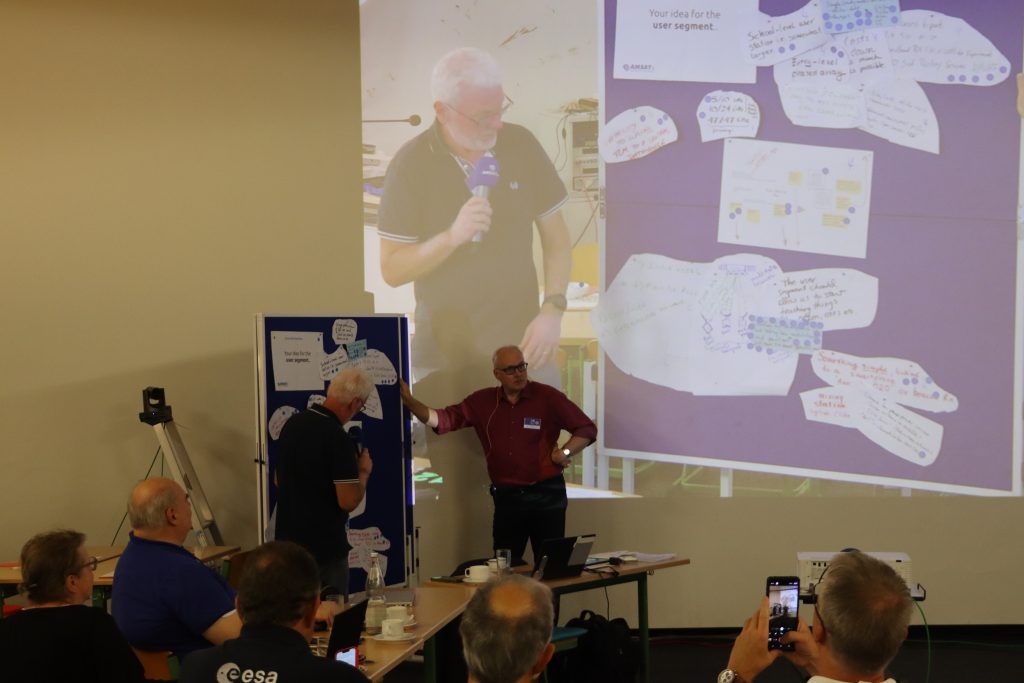
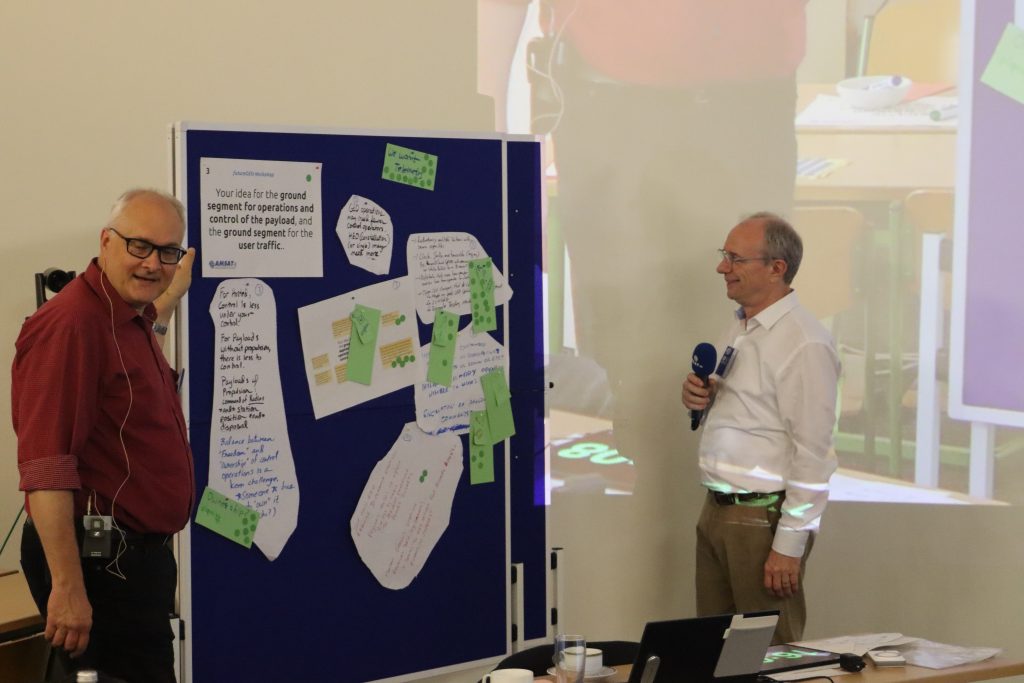
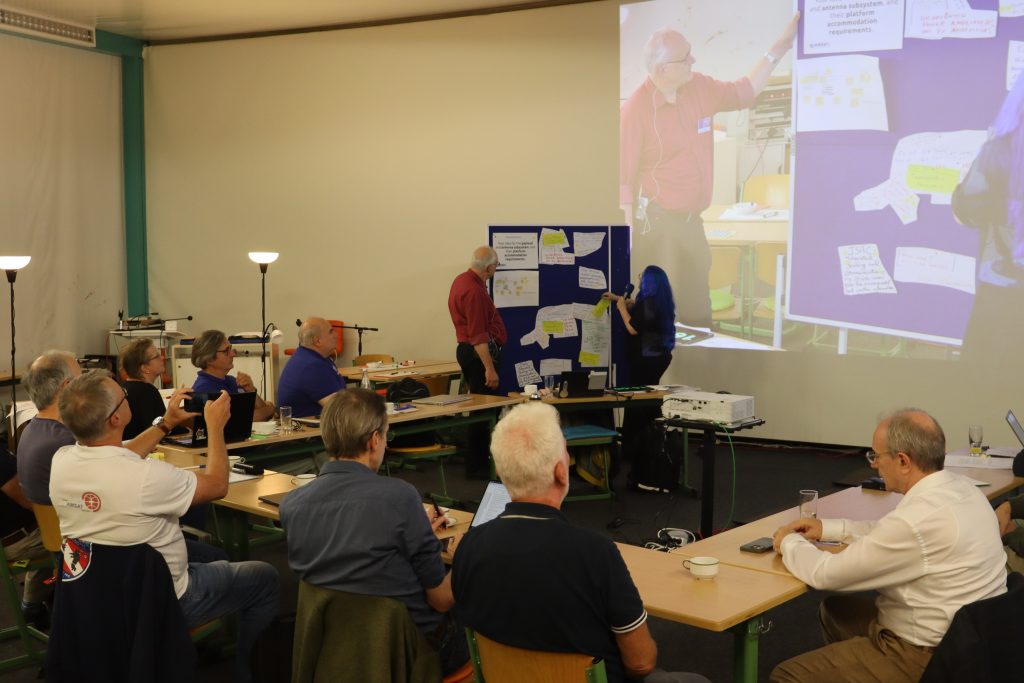
Review and outlook
In a concluding reflection among the participants, it became clear how much QO-100 has revitalized and enriched the amateur radio community:
- Affordable entry into microwave communication with low-cost SDRs and LNBs.
- Development of open source software such as DVB-S2 encoders and decoders.
- Educational projects from schools to school contacts with Antarctica and other events.
The participants hope that radio amateurs can be even more involved in the construction of the hardware of a futureGEO with appropriate personal contribution, transparency and participation than was possible with QO-100 due to NDAs with the manufacturers and owners of the parent satellite.
The participants also thanked the moderator and the organizers from AMSAT-DL and the Bochum Observatory, especially Nicole Sehrig, for the professional conduct of the workshop. Special thanks also went to Jens Schoon DH6BB for the on-site video and sound technology, so that the online participants could also be involved in the discussions and elaborations.
The respective photo documentation and further information are available transparently in our “futureGEO” GitLab repository.
The next steps are clear: The mission ideas developed in the workshop will be further concretized and should be available by the end of 2025 in the form of 1-3 consolidated mission concepts that are both technically exciting and attractive to the international amateur radio community and must also be technically feasible.
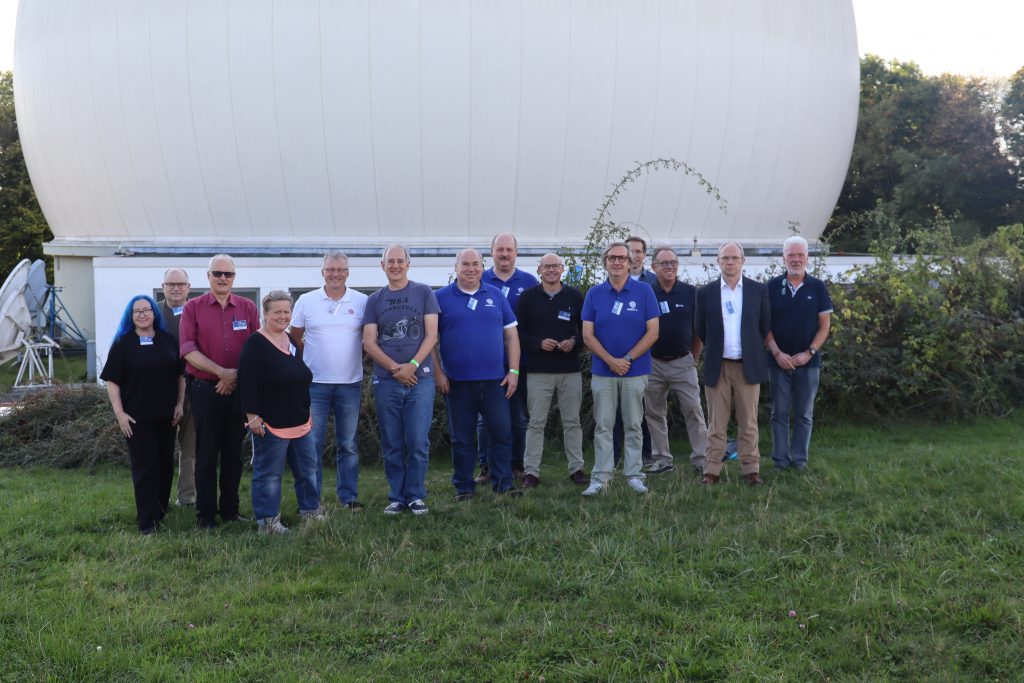
The future of amateur radio satellites depends on active participation in the community.

